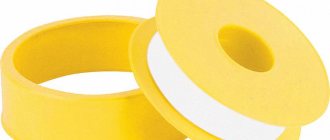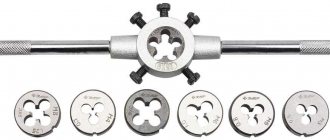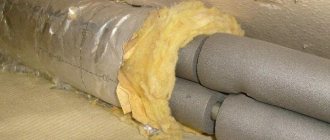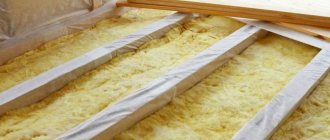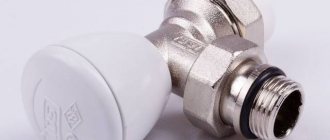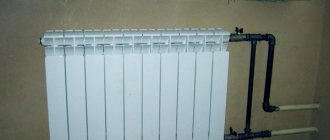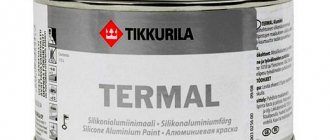Advantages
The most important advantages of this material include:
- resistance to high pressure;
- operating temperature range from -20 to +130 degrees Celsius;
- significant reliability and durability;
- ease of use;
- low cost;
- the ability to adjust pipe connections within 3 days without loss of tightness.
As you can see, the advantages of this material are numerous enough for every home craftsman to have this thread on hand for sealing threaded connections.
Application area
The main purpose of the thread is to ensure the tightness of threaded connections. Moreover, it can be used when working with both metal and plastic pipes. Threaded connections require special attention, especially when working with hot water and gas. The slightest leak can cause injury. Therefore, ensuring high tightness is the primary task of professionals. So the Tangit Unilok plumbing thread has become a real salvation for many craftsmen.
The service life is quite long - around 8-12 years. Moreover, all this time it can be exposed to pressure changes and high temperatures - up to +120 degrees Celsius. This does not reduce the reliability of the connections.
Attention! The silicone paste with which the polyamide thread is coated dries faster in the open air. Therefore, it is not advisable to open the packaging before starting work.
True, when working with it, you need to know exactly how to wind the Tangit Unilok thread correctly - the simplest mistakes can lead to a significant reduction in the durability of the material. In addition, experts do not recommend using it when working with pipes carrying drinking water. If silicone paste gets into water, it can deteriorate its taste. Also, the material is not suitable for working with systems regularly exposed to strong vibration.
Instructions for use
As mentioned above, when working with this plumbing thread, it is very important to know how to wind it around the joints. The process of use itself is quite simple.
The preparation process can be more troublesome. All work takes place in several stages:
- Prepare the thread - clean it with a stiff wire brush or file it.
- Take plumbing material (or Tangit) and the connection you are working with. With one finger, press the end of the thread against the product (for example, a muff) and carefully wind the thread in turns. You need to start from the end of the pipe, moving in the opposite direction. Make sure that the largest accumulation is closer to the end - when tightening the connection, the thread will partially move away from the edge, providing a reliable seal.
- Using the pointed edge on the container, cut the piping string. Wrap the end over the threads and tighten the connection gently but firmly.
That's all. Now you know how to wind Tangit correctly, and you can easily cope with its use.
Prices for Tangit Unilok thread
Application
- Preparing threads for sealing: If necessary, use a brush to clean metal threads. Before starting the wrapping operation, it is recommended to file the metal threads.
- Application: The tape is wound onto the thread in the direction of the threads, starting from the end of the pipe. The thread grooves should be filed using a file and then the threads should be wrapped without necessarily getting into the grooves. The tape can be cut using the cutting edge provided on the lid of the container. The tape is wound spirally in the container and will unwind without effort. Make sure the product is applied with some tension.
What is better for sealing threads?
Experts know that a variety of materials are used as pipe windings. What advantages do they have? Let's talk about them in more detail.
Important! Tangit Unilok thread can be used when working with fairly thick pipes - up to 6 inches (more than 15 centimeters!) inclusive.
The most common three options (except for Tangit thread): plumbing flax, Fum tape and Moment Germent thread.
Plumbing linen
This is the oldest and most time-tested material. GOST, which specifies the characteristics of sanitary flax, was developed more than thirty years ago.
This sealant is the cheapest of the materials presented on the list. In addition, when used correctly, it provides high durability - up to twenty years.
High environmental friendliness makes it the best choice for use in sealing threaded connections on drinking water pipes.
The disadvantage is the low ability to withstand pressure. The fibers cannot withstand significant loads. In addition, the plumbing sealant with which flax is impregnated not only reduces environmental safety, but also negatively affects the condition of the thread - the corrosion rate increases, which can lead to rupture.
Prices for sanitary ware
Fum Tape
This material boasts high chemical resistance. Thanks to fluoroplastic impregnation, it perfectly withstands aggressive environments, including pure chilled oxygen - few analogues can boast of such qualities.
The disadvantage is the relative difficulty of use - by applying too much or too little sealant, you cannot ensure the safety of the connection. Also, this tape is not suitable for use in heating or hot water systems. At elevated temperatures, fluoroplastic loses strength, spreading and significantly reducing its tightness.
Prices for Fum Tape
Thread Moment Germent
Easy to use and convenient sealant. Withstands significant pressure (in a gas pipeline up to 8 bar, in a water supply up to 16 bar). Provides high reliability of connections, and the latter can be slightly adjusted within a few hours after application.
Tests
Attention! When it comes to thread, I'm a teapot! So here are the impressions of a person who seems to be doing everything for the first time. Actually in the second or third. So all the impressions are real!
I needed to change the pump in the well caisson. The old one started to malfunction after 15 years of service and I decided to replace it. On the pump I have an inlet and outlet for water. An inch each. I needed to screw parts of American women into these threads.
The difficulty is that the threads are painted, and painted threads are very difficult to work with. When working with painted threads, the sealing materials “stick out” for some reason. Sometimes you have to redo it. And you don’t use sealant (anaerobic). The sealant requires clean metal, not paint.
In short, I began to wind the thread onto the thread. The manufacturer advises starting from the first turn. Secure the first loop well, and then wind it across the thread so that the main thickening is in the middle of the thread. I began to act according to the instructions and nothing worked out for me.
Clamping part of detachable connection
Wound too much thread. Even the union nut was difficult to get through.
Firstly, I’m used to winding not from the first turn, but from the last. But, as I found out, it doesn’t matter at all which edge you wind from. If you want the latter, for God's sake! Secondly, I couldn’t make it thinner at the edges and thicker in the middle. Thirdly, I decided to count the turns (see information from the manufacturer), but I was not twisting the thread around the part, but the part, so I immediately got lost.
That's interesting! If the instructions say that in the middle you need to make the winding thicker than at the edges, why do these same authors advise starting winding from the very edge of the thread? In this case, it is logical to start from the middle! This is a good idea, by the way!
In short, I immediately made a mistake with the first American woman. I wound it too loosely and when twisting, I very quickly discovered that I was twisting the part, but the thread was standing still, that is, it was not spinning with the thread. I had to unscrew everything and redo it. Along the way, I discovered another significant plus. I used the same thread a second time that I wound poorly the first time. I have never had such maneuvers with flax.
The second time I wound it very tightly. I pulled every turn! And the second time, when twisting, the thread was already spinning along with the thread. But, apparently, I went too far with the thread and towards the very end of twisting, loops of thread began to form. But I left the connection as is. I've been plumbing for quite some time and trust my instincts. In this case, three quarters of the thread has already entered the thread and the loops went at the very end.
I spun the second American one with less thread and everything went well. There were no loops.
I put the pump in its intended place and made sure that nothing was leaking. The prank, as they say, was a success!
Twisting process (beginning)
Twisting process (completion)
Where are the downsides? The disadvantages are conditional. It is difficult to wind the thread neatly and correctly if you are not used to it. It looks like you shouldn't take the maximum values from the table above. A number of turns closer to the minimum value in the specified range works well.
Related video: how to wind plumbing thread
Thread is the most convenient and simple seal. Thread sealing with thread is available for the most inexperienced citizens in plumbing when repairing various pipelines.
Thread sealing with thread
It can be wound on any thread - old and new, clean and rusty, dry and wet. Sealing threads with thread is similar to working with flax, because the basic skills in the work are the same.
Linen (tow), fum or plumbing thread?
Ordinary tow is an old but proven remedy in plumbing; in fact, it is the “old-fashioned method”. Tow is suitable for both winding and other work. Modern industry offers alternatives such as fluoroplastic tape and ready-made sealing threads.
While their use may be more convenient for a number of reasons, linen has its advantages: it is more environmentally friendly compared to fluoroplastic and is much more affordable than special plumbing thread. It is quite possible that in the future we will see new solutions that will displace flax, but for now, knowing how to wind tow on a thread will never be superfluous for a business person.
How to properly seal threads with thread
The article tells you where to use the thread and how to wind it. Evaluating the quality of winding and the advantages of the thread are also important when using it.
Where is the thread used?
This sealant performs well when sealing threaded connections on various water supply systems. This applies to heating and hot water supply devices operating within the permissible temperature limits for the filament. Their heating should not exceed + 120°C. The thread is not sensitive to deformation of connections when they are heated and cooled during operation of the heating system.
It is convenient and easy to use for anyone who does not have practical experience in sealing threads with thread.
Commonly used brands of thread include:
- “Tangit Uni-Lock” made in the Czech Republic for sealing metal and plastic threads;
- "Loctite" - manufacturer Ireland;
- "Record" - manufactured in Russia.
Each of these brands, when used correctly, fully provides the required joint density. The choice is made mainly depending on the cost and availability of the thread on sale.
How to seal threads with thread
The number of winding turns is indicated on the thread packages. It tells you what diameter and how many times to wind it in turns and centimeters. Practice shows that this recommendation is not applicable everywhere. It is suitable for plumbing systems with pressures up to three bar, and for perfect new threads.
For other conditions, the amount of filament used is indicated later in this article.
Do not rush to buy the packaging that indicates a smaller number of turns for winding. This will cost less, but is not always justified.
Winding method No. 1
It should be used on new, unused threads. The sealing thread manufacturer suggests winding in a criss-cross pattern along the width of the thread. The recommended number of turns is indicated on the packaging. For example, for a ¾-inch thread they need to be wound 7 to 10 turns. Practice shows that it is better to immediately wind three turns more.
We wrap the thread sealing thread “crosswise”
The thread must be sealed with thread so that when winding is completed, a tubercle forms in the middle of the thread width. This is necessary so that when screwing the part, the wound thread does not come out at the end of the thread.
Winding method No. 2
This is the result of practice, and is used for threads that have already been used and have some degree of wear.
Here the thread consumption is much higher than the manufacturer recommends. For example, for a ½-inch thread on the package, it is recommended to wind 5-8 turns. In reality, a good connection will require 12-13 turns.
Holding the edge of the thread at the end of the thread with your finger, you should place the thread in each groove. In this case, we pass the thread until the beginning of the thread. The winding direction clockwise corresponds to the right-hand thread. For left-hand threads we do everything in the opposite direction.
Winding according to method No. 2
Then, by sealing the thread with thread, you can wind it randomly without adhering to the grooves. It is necessary that the main amount of thread ends up in the middle of the thread, forming a tubercle in this place. In this case, the screwed part will fit correctly into the thread. When twisted, the thread will be positioned evenly and will not come out.
Winding quality assessment
Winding is done correctly if:
- the threads disappeared and a tubercle of thread formed. This is not always possible to achieve when winding the recommended number of turns. If it is clear that the thread has been laid, but the upper part of the thread is visible, then not enough sealant has been wound. You cannot assemble such a connection; it will definitely leak. The reason lies in the quality of the thread itself or its condition during operation;
- a high-quality wound thread will create the need to apply medium force when winding the part. If the connection twists easily and without effort, then there is not enough thread wound. You need to disassemble it and add a seal.
In any case, before starting to seal the thread with thread, it is recommended to practice on a test connection.
Thread sealing with thread - advantages of the material
Firstly, it's cleanliness. When using a sealing thread, there is no need to apply any lubricant to it or the threads. The material itself is pure and does not require additional processing before use. During the work, your hands will always be clean. The same goes for the products we work with. Use thread to seal threads in visible areas. It will always look beautiful and aesthetically pleasing.
Secondly, the speed of work completion. An experienced plumber spends four times less time when using thread than when working with flax. It takes three times less time than when using fum tape.
Flax tow: features
Plumbing tow is a fibrous material that is used to seal threads. This is a completely natural product obtained from the primary processing of homogeneous, thin, long-fiber flax, which is extracted from the stem of the plant.
The scope of application of tow is very wide. Depending on the production technology, it can be tape, construction, jute and sanitary. Construction tow is a reliable way to insulate almost any connection. For its production, fully combed short flax fibers are used, and it is supplied in bales.
This material is intended for construction work on sealing seams, laying and insulating log houses. Being natural, flax is especially valued among those who build wooden houses. If construction tow is supplied in rolls of a certain width, then it is called strip tow. Linen tape tow is a material for caulking up to 1 cm thick. It is used for sealing seams and voids in log houses and laying crowns.
What is used for reeling? The classic option is good old flax (also called tow or hemp), fum tape, anaerobic sealants and Tangit polyamide thread.
There have been debates about what is best to use for many years, but no clear answer has been found. The fact is that the material is selected depending on the type of work and can be interchangeable and complementary.
Let's talk about the advantages of flax for plumbing work:
- the main “plus” of flax tow is its price – cheaper than any other material;
- it is used sparingly;
- its thin fibers are very durable;
- with proper winding, it is suitable for any type of work with any connections, including sealing cast iron and ceramic pipes;
- flax can swell, absorbing possible moisture, thereby hermetically blocking the path to leakage;
- the high mechanical stability of the material allows you to adjust the plumbing fixtures: without losing the hermetic properties, you can unscrew the connection half a turn or a full turn.
We suggest you read: How to remove the motor of a washing machine on Malyutka, Indesit, Bosch
The disadvantages of tow include the following aspects:
- since flax is an organic substance, it tends to rot under the influence of moisture and air that enter it, for example, during routine examinations. For this purpose, tow is always accompanied by additional material that prevents putrefactive processes (sealing paste, grease, oil paint, lithol and others);
- thread preparation is often required;
- too thick a layer of material can lead to cracking of connections, especially bronze and brass;
- This is a seal that requires knowledge of winding rules. On a whim, nothing good will come of it;
- accompanying materials in combination with flax can make disassembly difficult, for example, oil paint and silicone can make the dismantling process impossible;
- flax is not suitable for use where temperatures reach 90 °C. In such places, it “welds” over time and loses its sealing properties;
- If we are dealing with steel, then non-compliance with the winding technology can even lead to thread corrosion.
Before you wind flax on a thread, you should become more familiar with what flax tow is. This is a fibrous material that is used to seal threads. The product is natural, it is made from the primary processing of fine, uniform and long-fiber flax.
The area of use of flax tow is very wide. Depending on the manufacturing technology, the material can be tape, plumbing, jute or construction. In the latter case, we are talking about insulation, which can ensure reliable tightness of almost any connections. For its production, fully combed fibers are used, which are supplied in bales.
This material is used for construction work on sealing seams, insulating the log house and laying wooden elements. It is natural, which is especially valued among those who build wooden houses. If construction tow is supplied in rolls, then it is called tape. This material is also used for caulking seams in log houses and laying crowns.
An advantage of using flax for plumbing work is its cost. The material is much cheaper compared to any other. It is consumed economically; the fibers, although thin, have high strength. If you wind them correctly, they can be used for any type of work where any connections are used. These can be ceramic and cast iron pipes.
How to wind tangit unilock
Before sealing with tangit, you should prepare the thread - clean it with a brush, and if necessary, file it.
In one hand, take the product on which the sealant will be wound (a coupling, for example), and in the other - the Tangit Unilock thread itself. Pinch the tip of the thread with one finger and begin to wind the tangit from the end of the pipe (the beginning of the thread) towards the depth of the thread. In the container, the thread is wound in a spiral and unwinds without effort.
The wound thread should be accumulated at the beginning of the thread, since when the threaded connection is tightened, the tangit unilok thread moves under the influence of force deeper into the thread. And in order to distribute the sealant evenly, it is necessary to create a thicker layer of thread at the beginning.
There is no point in winding a lot of thread; just a few turns are enough. The recommended number of turns is written on the instructions for using the sealant.
Use the sharp edge of the container to cut the thread. Simply smooth the end of the thread onto the thread with your finger.
Advantages of tangit uniloc thread
"Tangit Uni-Lok" is the latest sealant consisting of polyamide thread and treated with a silicone coating. The advantages of Tangit Unilock are obvious:
- used for all types of threads;
- ease of use;
- instant sealing after implementation;
- the ability to adjust the connection after implementation;
- used for fittings (up to 6 inches);
- can be used to connect gas pipes and drinking water supply;
- permissible temperature of use is from -20°С to +130°С.
